Lire la suite
(Lyon, 1872 - id., 1954)
Portrait of Auguste Rodin
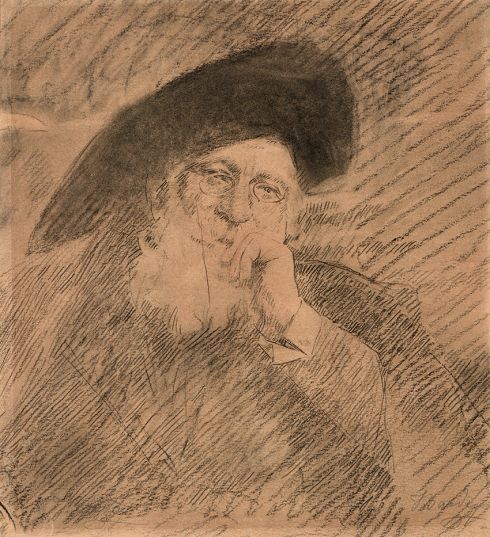
‘The art of Mrs Bardey expresses itself through the spike as well as the chisel [...] She uses all the means of expression: clay, bronze, marble or plaster, graphite, pastel, water-color, dry point or etching’.1 This is how is described the talent of Jeanne Bardey (née Bratte) in 1924 in this list that showing the variety of her artistic activities. Bardey starts her apprenticeship of painting in her native city Lyon, with Jacques Martin (1844-1919) and then with François Guiguet (1860-1937) while in Paris, where she meets Auguste Rodin (1840-1917) around 1909.2 She sends to him her drawings and seek for his attention, in an artistic way: ‘[...] to communicate with you I am practicing drawing, isn’t it the greatest way to understand each other?’3 she writes. Even when she begins sculpting under his direction, drawing is essential as she emphatically declares: ‘[...] it is in fever that I draw now. I loved drawing and I adore it now. I cannot stop drawing as when I draw I am drunk of hapiness’.4
The corpus of her drawings is a sample of the diversity of the mediums she uses and the skills she has: Bardey uses the soft and free outline in her drawings ‘[that are] surprisingly charming, full of liveliness and plain’,5 as well as the rigor of the dry point while scrutinizing her models. She makes good use of the latter for science through her drawings made from 1909: she manages to render the patients’ expressions treated at the psychiatric hospitals at Villejuif and the Pitié Salpêtrière. Bardey takes part to the study of the mental pathologies as part of the laboratory of Morphology at the École des Hautes-Études where she works from 1912 as a draughtsman.6 This year the critic Camille Mauclair gets interested in her art he compares to a writing in his article ‘Drawings by Mrs Jeanne Bardey’, which introduces her to the Parisian audience. Mauclair mentions Rodin but emphasizes the two artists ‘deeply differ from each other in the psychological intention’ of their drawings: Rodin ‘seeks synthesis of forms and analogies’ when Bardey probes ‘the inner thought of people she watches’, Mauclair comparing her approach to the ‘ writer observing’.7
Our portrait is a drawing made from a photograph (ill.1) taken in 1916 in the house of Jeanne and Henriette Bardey, n° 14, rue Robert in Lyon where Rose Beuret and Rodin stay for few days of this year.10 The picture shows the three women surrounding Rodin who leans his head on his left hand and wears glasses and his black beret that features on photographs by Pierre Choumoff (1872-1936) included Portrait de Rodin coiffé d’un large béret11 in 1917. In our drawing, Bardey choses to isolate the sculptor from the group, she keeps his meditative position, casual and thoughtful at the same time. The background and his body are blurred but she focuses on his face and his hand, the tool of the artist, processing as an ‘intense analyst of the character’.12 The model stares at us and the cleverness of his gaze seems to breaks through his glasses. Through this portrait of Rodin, Bardey shows she is familiar of him, and the date 1916 has a specific meaning. One year before Rodin dies, she is in the middle of what is called ‘the battle of the Rodin’s museum’.13 Indeed, the sculptor gives a donation of his œuvre and collection to the French State in order to create his museum and intents to name in his will Bardey, along with Rose Beuret, his beneficiary. She is removed from the project by Rodin’s friends, including Judith Cladel.14 Still in 1916, Bardey makes the portrait of Rodin in terra cotta imitating bronze,15 and many other effigies of him as it may be seen in the catalogue of her retro- spective in Lyon in 1956 organized by her daughter Henriette Bardey: on the list feature portraits of Rodin made in 1916: a bust of Rodin in bronze (n° 10), and drawings as Group of three people including Rodin (n° 98), Rodin’s profile (n° 99), and a portrait of Mme Rodin (n° 97).16
Although she cannot be the legal recipient of Rodin’s memory, Bardey finds other ways to highlight the bound she has with him, a bound stronger than the regular master-student relationship. In 1924 her volume entitled Quinze estampes d’après Auguste Rodin,17 made of fifteen etchings18 from works by Rodin, is published and the etchings, along her other works, are exhibited at the Librairie Helleu et Sergent in Paris. The press notices the memory of the deceased sculptor:
[Rodin is] present, not only via few portraits in dry point made from life and for which he gave himself his ready for press written in the margin of the exhibited proof, but also in fifteen etchings where Mrs Bardey reproduces carefully fifteen sculptures by Rodin, being not afraid of adding to the memory of Rodin this gesture of admiration as a statement and that describes, with scrupulous accuracy, while exalting the beauty of his statues and drawings now famous across the world.19
This is interesting then to notice that the process of making for these etchings is similar to the one used for our portrait in 1916, a process described here:
[The etchings] are not cold copies brought by Mrs Bardey, they are interpretations that move forms and recreate them, which would not be found in an objective copy or a photograph. Here, the work of art is an opportunity to make another one, as it is made by an awed admiration.20
The photograph used by Bardey to draw our portrait of Rodin in 1916 is an interpretation too, from another medium, which shows the ease of the artist while practicing her art. She references the master’s image but still claims her own style while adding the portraits of Rodin she made to the volume Quinze estampes d’après Auguste Rodin, also known as Hommage à Rodin.21
Following her ousting from the Rodin’s museum project, Bardey travels abroad with her daughter Henriette, then from 1938, she makes several journeys in Egypt where contact with local life and antic monuments feeds her artistic production.22 Her taste for Antic Egypt is dated from 1910, when she stats a collection of object, a hobby she has in common with Rodin and many other artist of that time.23 She is also close to Egyptophile circles in Lyon, including Alexandre Varille (1909-1951) she meets in Egypt in 1938 with Henriette.24 There, Bardey draws archaeological surveys from temple excavations, hold by the Musée des Arts décoratifs of Lyon. It seems that Jeanne Bardey was close to the Varille family as Mathieu Varille (1885-1963) supported in 1940 the organization of an exhibition of Bardey’s works at the Galerie Troncy in Lyon, and he owned our portrait of Rodin.
Eva Belgherbi – tr. Eva Belgherbi
1. Edouard Fonteyne, “Alfred Veillet. - Le Japon vu par M. Dantus - Groupes d’artistes. - A Lyon.”, L’Homme libre: journal quotidien du matin, March 29th 1924, p. 2.
2. Anne Rivière, Dictionnaire des sculptrices, Paris, Mare & Martin, 2017, p. 63.
3. Letter of Jeanne Bardey to Auguste Rodin, dated of August 7th 1909, dossier correspondance Jeanne Bardey, BAR-386, Paris, Musée Rodin.
4. Letter of Jeanne Bardey to Auguste Rodin, dated of December 26th 1909, dossier correspondance Jeanne Bardey, BAR-386, Paris, Musée Rodin.
5. Camille Mauclair, “Madame Bardey”, L’Art et les artistes, April 1913, p.129-137, p. 135.
6. On a visiting card sent from Jeanne Bardey to Auguste Rodin dated of December 15th,1915 it is written: “Madame Jeanne Bardey / Dessinateur du Laboratoire de Psychologie pathologique de l’Ecole pratique des Hautes Etudes”, dossier correspondance Jeanne Bardey, BAR-386, Paris, Musée Rodin.
7. Camille Mauclair, “Les dessins de Mme Jeanne Bardey”, L’Art décoratif, May 20th 1912, p. 293-298, p. 296-297.
8. See the titles of her works featuring on the lists made by Clément Migeon about the exhibitions of Jeanne Bardey in Clément Migeon “La rencontre avec l’Orient: l’Égypte de Jeanne Bardey”, Mémoire de master en sciences de l’information et des bibliothèques: Cultures de l'écrit et de l’image: Villeurbanne, ENSSIB, supervisors Philippe Martin and Maximilien Durand, 2016-2018, 3 vol., annexes vol. II, p. 20-25.
9. Letter of Jeanne Bardey to Auguste Rodin, dated of December 30th 1910, dossier correspondance Jeanne Bardey, BAR-386, Paris, Musée Rodin.
10. Migeon, op. cit., vol. II, annexes a, p. 10.
11. Pierre Choumoff, Portrait de Rodin coiffé d’un large béret, 1917, Silver gelatine print, 8,6 x 6,6 in, Paris, Musée Rodin, Ph.00874.
12. Mauclair, op. cit., 1913, p. 137.
13. See Hubert Thiolier, Jeanne Bardey et Rodin: une élève passionnée, la bataille du Musée Rodin, Bron, H. Thiolier, 1990, and Rose-Marie Martinez, Rodin, L’Artiste face à l’État, Séguier, Paris 1993.
14. Rivière, op. cit., p. 63.
15. Migeon, op. cit., vol. II, annexe a, p. 16.
16. Catalogue of the retrospective fo Mrs Bardey’s works at the chapel of the lycée Ampère, Lyon, from June 7th to June 30th 1956.
17. Quinze estampes d’après Auguste Rodin, by Jeanne Bardey, Paris, Helleu et Sergent, 1924.
18. A set of “etchings out of 15 after Rodin’s œuvre” had already been exhibited at the Galerie Bernheim-Jeune, Paris, from October 3rd to 13th 1921.
19. René-Jean, “Parmi les petites expositions”, Comœdia, January 13th 1924, p. 3.
20. René-Jean, id.
21. An advertisement for this volume precises “Quinze estampes d’après Auguste Rodin. Paris, Helleu et Sergent, 1924; peu. In-fol., en ff., dans un carton. (474) 150 fr. Album de 15 estampes, la plupart tirées à 25 épreuves num. seulement sur papier vélin blanc. On y joint 11 portraits de Rodin, dont plusieurs gravés par Mme Bardey, tirés sur divers papiers.” Comœdia, January 6th 1924, np (Documentation of the Musée Rodin, Paris).
22. The important work of research led by Cle?ment Migeon on Jeanne Bardey and Egypt sheds light on the Archives Jeanne Bardey hold by the Musée des Arts décoratifs in Lyon, including the relationship with the Varille family.
23. Migeon, op. cit., vol. I, p. 33. The collection of Jeanne Bardey is owned by the Musée des Arts décoratifs in Lyon and Clément Migeon made its inventory in his Mémoire.
24. Migeon, op. cit., vol. II, annexe a, p. 14.
Réduire
Lire la suite
 Antoine Chintreuil
(1814 - 1873)
Antoine Chintreuil
(1814 - 1873)
 Pierre Révoil
(Lyon 1776 – 1842)
Pierre Révoil
(Lyon 1776 – 1842)
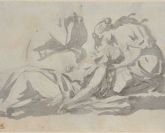 Jacques-Louis David
(Paris, 1748 – Bruxelles, 1825)
Jacques-Louis David
(Paris, 1748 – Bruxelles, 1825)
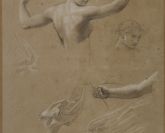 Jean-Baptiste REGNAULT, Baron
Paris, 1754 – Id., 1829
Jean-Baptiste REGNAULT, Baron
Paris, 1754 – Id., 1829
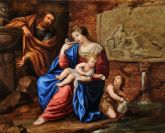 Jacques Stella
(Lyon, 1596 – id., 1657)
Jacques Stella
(Lyon, 1596 – id., 1657)
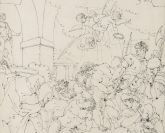 Louis Adrien Masreliez
(Paris, 1748 – Stockholm, 1810)
Louis Adrien Masreliez
(Paris, 1748 – Stockholm, 1810)
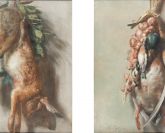 Antoine Berjon
(Lyon, 1754 – id., 1838)
Antoine Berjon
(Lyon, 1754 – id., 1838)
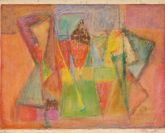 Geer van Velde
(Lisse, 1898 – Cachan, 1977)
Geer van Velde
(Lisse, 1898 – Cachan, 1977)
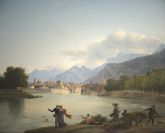 Jean-Joseph-Xavier Bidauld
(Carpentras, 1758 - Montmorency, 1846)
Jean-Joseph-Xavier Bidauld
(Carpentras, 1758 - Montmorency, 1846)
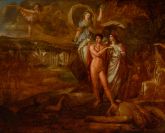 Philippe-Auguste Hennequin
(Lyon, 1762 – Leuze, près de Tournai, 1833)
Philippe-Auguste Hennequin
(Lyon, 1762 – Leuze, près de Tournai, 1833)
 Julien Adolphe Duvocelle
(Lille, 1873 – Corbeil-Essonnes, 1961)
Julien Adolphe Duvocelle
(Lille, 1873 – Corbeil-Essonnes, 1961)
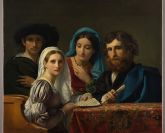 François-Joseph Navez
(Charleroi, 1787 – Bruxelles, 1869)
François-Joseph Navez
(Charleroi, 1787 – Bruxelles, 1869)
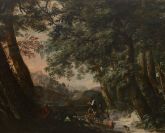 Philippe-Auguste Immenraet
(Anvers, 1627 – id., 1679)
Philippe-Auguste Immenraet
(Anvers, 1627 – id., 1679)
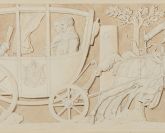 Alexandre-Evariste Fragonnard
(Grasse, 1780 – Paris, 1850)
Alexandre-Evariste Fragonnard
(Grasse, 1780 – Paris, 1850)
 Jeanne-Elisabeth Chaudet
(Paris, 1767 - id., 1832)
Jeanne-Elisabeth Chaudet
(Paris, 1767 - id., 1832)
 Charles Barthélemy Jean Durupt
(Paris, 1804 - id., 1838)
Charles Barthélemy Jean Durupt
(Paris, 1804 - id., 1838)
 Alexandre-Evariste Fragonard
(Grasse, 1780 - Paris, 1850)
Alexandre-Evariste Fragonard
(Grasse, 1780 - Paris, 1850)
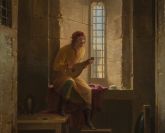 Jean-Antoine Laurent
(Baccarat, 1736 - Epinal, 1832)
Jean-Antoine Laurent
(Baccarat, 1736 - Epinal, 1832)
 Rafael Tejeo Diaz, dit Tejeo (ou Tegeo)
(Caravaca de la Cruz, Murcie, 1798 - Madrid, 1856)
Rafael Tejeo Diaz, dit Tejeo (ou Tegeo)
(Caravaca de la Cruz, Murcie, 1798 - Madrid, 1856)
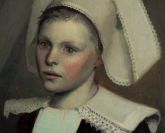 Eric Forbes-Robertson
(Londres, 1865 – id., 1935)
Eric Forbes-Robertson
(Londres, 1865 – id., 1935)
 Victor Orsel
(Oullins, 1795 – Paris, 1850)
Victor Orsel
(Oullins, 1795 – Paris, 1850)
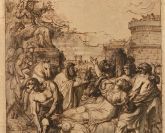 François-Xavier Fabre
(Montpellier, 1766 – id., 1837)
François-Xavier Fabre
(Montpellier, 1766 – id., 1837)
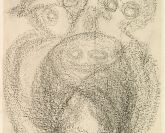 Jean Raine
(Bruxelles, 1927 – Rochetaillée-sur-Saône, 1986)
Jean Raine
(Bruxelles, 1927 – Rochetaillée-sur-Saône, 1986)
 Merry-Joseph Blondel
(Paris, 1781 – id., 1853)
Merry-Joseph Blondel
(Paris, 1781 – id., 1853)
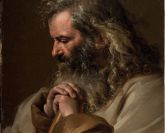 Jean-Jacques Forty
(Marseille, 1743 – Aix-en-Provence, 1801)
Jean-Jacques Forty
(Marseille, 1743 – Aix-en-Provence, 1801)
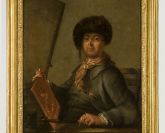 François Eisen
(1695, Bruxelles – 1778, Paris)
François Eisen
(1695, Bruxelles – 1778, Paris)
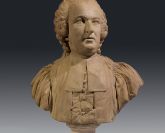 Clément Jayet
(Langres, 1731 - Lyon, 1804)
Clément Jayet
(Langres, 1731 - Lyon, 1804)
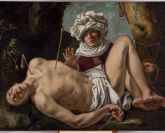 Cornelis De Beer
(Utrecht, 1591 - Madrid, 1651)
Cornelis De Beer
(Utrecht, 1591 - Madrid, 1651)
 Adam De Coster
(Malines, c. 1586, Antwerp, 1643)
Adam De Coster
(Malines, c. 1586, Antwerp, 1643)
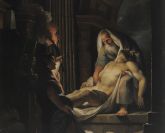 Giovanni David
(Gabella Ligure, 1749 - Gênes, 1790)
Giovanni David
(Gabella Ligure, 1749 - Gênes, 1790)
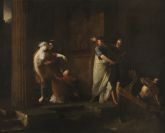 Antoine Dubost
(Lyon, 769 - Paris, 1825)
Antoine Dubost
(Lyon, 769 - Paris, 1825)
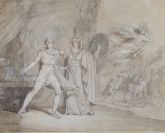 Joseph Denis Odevaere
(Bruges, 1775 - Bruxelles, 1830)
Joseph Denis Odevaere
(Bruges, 1775 - Bruxelles, 1830)
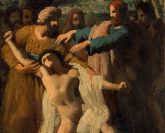 Henri-Joseph Forestier
(Puerto Hincado, Santo Domingo, 1787 – Paris, 1872)
Henri-Joseph Forestier
(Puerto Hincado, Santo Domingo, 1787 – Paris, 1872)
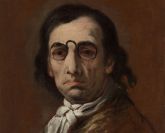 Luca Giordano
(Naples, 1634 - id., 1705)
Luca Giordano
(Naples, 1634 - id., 1705)
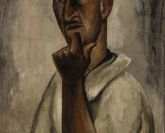 Emile Didier
(Lyon, 1890 - id., 1965)
Emile Didier
(Lyon, 1890 - id., 1965)
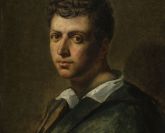 Pierre-Nolasque Bergeret
(Bordeaux, 1782 - Paris, 1863)
Pierre-Nolasque Bergeret
(Bordeaux, 1782 - Paris, 1863)
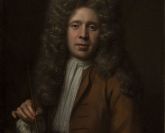 André Bouys
(Hyères, 1656 - Paris, 1740)
André Bouys
(Hyères, 1656 - Paris, 1740)
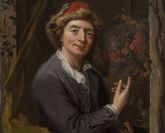 Jacques-François Delyen
(Gand, 1684 - Paris, 1761)
Jacques-François Delyen
(Gand, 1684 - Paris, 1761)
-165x133.jpg) Jean-Jacques de Boissieu
(Lyon, 1736 - id., 1810)
Jean-Jacques de Boissieu
(Lyon, 1736 - id., 1810)
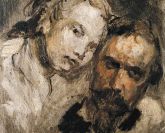 Jean-Baptiste Carpeaux
(1827 - 1875)
Jean-Baptiste Carpeaux
(1827 - 1875)
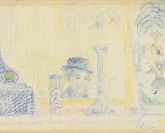 James Ensor
(Ostende, 1860 - id., 1949)
James Ensor
(Ostende, 1860 - id., 1949)
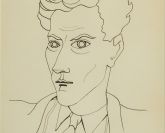 Jean Cocteau
(Maisons-Laffitte, 1889 - Milly-la-Forêt, 1963)
Jean Cocteau
(Maisons-Laffitte, 1889 - Milly-la-Forêt, 1963)
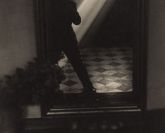 Antoine Demilly
(Mâcon, 1892 – Lyon, 1964)
Antoine Demilly
(Mâcon, 1892 – Lyon, 1964)
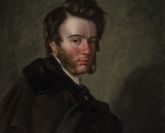 Charles Dukes
actif à Londres entre 1829 et 1865
Charles Dukes
actif à Londres entre 1829 et 1865
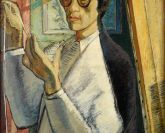 Crikor GARABÉTIAN
Bucarest, 1908 – Lyon, 1993
Crikor GARABÉTIAN
Bucarest, 1908 – Lyon, 1993
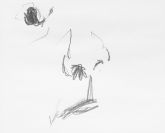 Pierre Tal-Coat [Pierre Jacob]
(Clohars-Carnoët, 1905 – Saint-Pierre-de-Bailleul, 1985)
Pierre Tal-Coat [Pierre Jacob]
(Clohars-Carnoët, 1905 – Saint-Pierre-de-Bailleul, 1985)
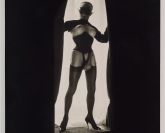 Pierre Molinier
(Agen, 1900 - Bordeaux, 1976)
Pierre Molinier
(Agen, 1900 - Bordeaux, 1976)
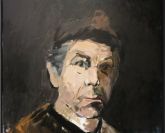 Patrice Giorda
né en 1952
Patrice Giorda
né en 1952
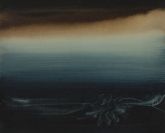 Frédéric Benrath
(Lyon, 1930 - Paris, 2007)
Frédéric Benrath
(Lyon, 1930 - Paris, 2007)
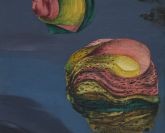 Félix Labisse
(Marchiennes (Nord), 1908 - Neuilly-sur-Seine, 1982)
Félix Labisse
(Marchiennes (Nord), 1908 - Neuilly-sur-Seine, 1982)
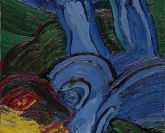 Bengt Lindström
(1925 - 2008)
Bengt Lindström
(1925 - 2008)
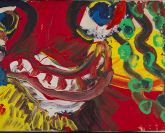 Bengt Lindström
(1925 - 2008)
Bengt Lindström
(1925 - 2008)
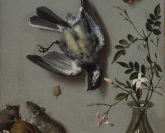 Jean-Batpiste Oudry
Paris, 1686 – Beauvais, 1755)
Jean-Batpiste Oudry
Paris, 1686 – Beauvais, 1755)
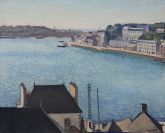 Albert Marquet
(Bordeaux, 1875 - Paris, 1947)
Albert Marquet
(Bordeaux, 1875 - Paris, 1947)
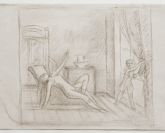 Balthasar K?OSSOWSKI DE ROLA, dit BALTHUS
(Paris, 1908 – Rossinière, 2001)
Balthasar K?OSSOWSKI DE ROLA, dit BALTHUS
(Paris, 1908 – Rossinière, 2001)
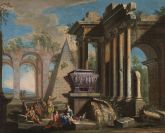 Gioavni Paolo Panini
(Plaisance, 1691 – Rome, 1765)
Gioavni Paolo Panini
(Plaisance, 1691 – Rome, 1765)
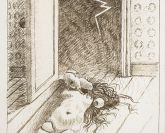 Alberto Savinio
(Athènes, 1891 - Rome, 1952)
Alberto Savinio
(Athènes, 1891 - Rome, 1952)
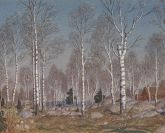 Oskar Bergman
(Stockholm, 1879 - id., 1963)
Oskar Bergman
(Stockholm, 1879 - id., 1963)
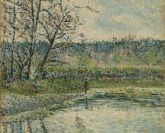 Léon Pourtau
(Bordeaux, 1868 - mort en mer, 1898)
Léon Pourtau
(Bordeaux, 1868 - mort en mer, 1898)
 Jean-Baptiste Chatigny
(Lyon, 1834 - id., 1886)
Jean-Baptiste Chatigny
(Lyon, 1834 - id., 1886)
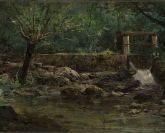 Adolphe Appian
(Lyon, 1814 – id., 1898)
Adolphe Appian
(Lyon, 1814 – id., 1898)
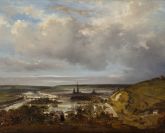 Paul Huet
(Paris, 1803 - id., 1869)
Paul Huet
(Paris, 1803 - id., 1869)
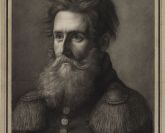 Fabius, dit Fabien Van Risamburgh
(Lyon, 1794 – Saint-Gengoux-le-National, Saône-et-Loire, 1866)
Fabius, dit Fabien Van Risamburgh
(Lyon, 1794 – Saint-Gengoux-le-National, Saône-et-Loire, 1866)
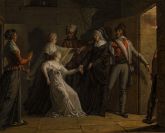 Jacques-Augustin Pajou
(Paris, 1766 b- id., 1828)
Jacques-Augustin Pajou
(Paris, 1766 b- id., 1828)
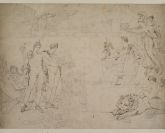 Louis Lafitte
(Paris, 1770 – id., 1828)
Louis Lafitte
(Paris, 1770 – id., 1828)
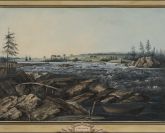 Louis Bélanger
(Paris, 1756 - Stockholm, 1816)
Louis Bélanger
(Paris, 1756 - Stockholm, 1816)
 Claude Joseph Vernet
(Avignon, 1714 - Paris, 1799)
Claude Joseph Vernet
(Avignon, 1714 - Paris, 1799)
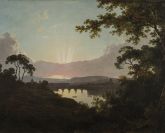 Joseph Wright of Derby
(Derby, 1734 – id., 1797)
Joseph Wright of Derby
(Derby, 1734 – id., 1797)
 Claude-Joseph Vernet
(Avignon, 1714 – Paris, 1789)
Claude-Joseph Vernet
(Avignon, 1714 – Paris, 1789)
 Philippe-Auguste Hennequin
(Luo, 1762 - Leuze, near Tournai, 1833)
Philippe-Auguste Hennequin
(Luo, 1762 - Leuze, near Tournai, 1833)
 Balthasar Klossowski de Rola, known as Balthus
(Paris, 1908 - Rossinière, 2001)
Balthasar Klossowski de Rola, known as Balthus
(Paris, 1908 - Rossinière, 2001)
 Jean-Baptiste Oudry
(Paris, 1686 - Beauvais, 1755)
Jean-Baptiste Oudry
(Paris, 1686 - Beauvais, 1755)
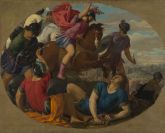 Jean Daret
(Brussels, 1614 - Paris, 1668)
Jean Daret
(Brussels, 1614 - Paris, 1668)
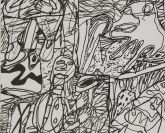 Jean Dubuffet
(Le Havre, 1901 - Paris, 1985)
Jean Dubuffet
(Le Havre, 1901 - Paris, 1985)
 Fabius, known as Fabien van Risamburgh
(Lyon, 1794 - Saint-Gengoux-le-National, Saône-et-Loire, 1866)
Fabius, known as Fabien van Risamburgh
(Lyon, 1794 - Saint-Gengoux-le-National, Saône-et-Loire, 1866)
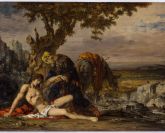 Gustave Moreau
(Paris, 1826 – id., 1898)
Gustave Moreau
(Paris, 1826 – id., 1898)
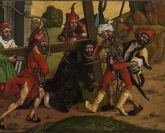 Rhin supérieur, entourage de Martin Schongauer ?
Rhin supérieur, entourage de Martin Schongauer ?
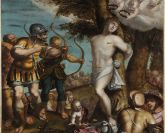 Giovanni Battista Castello, dit Il Bergamasco
(Crema, vers 1526 – El Escorial, 1569)
Giovanni Battista Castello, dit Il Bergamasco
(Crema, vers 1526 – El Escorial, 1569)
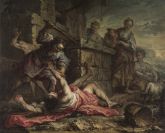 Giuseppe Antonio Pianca
Agnona, 1703 – Milano, 1762)
Giuseppe Antonio Pianca
Agnona, 1703 – Milano, 1762)
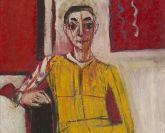 Pierre TAL-COAT (Pierre JACOB)
(Clohars-Carnoët, 1905 – Saint-Pierre-de-Bailleul, 1985)
Pierre TAL-COAT (Pierre JACOB)
(Clohars-Carnoët, 1905 – Saint-Pierre-de-Bailleul, 1985)
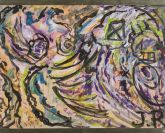 Jean Raine
(Bruxelles, 1927 - Rochetaillées-sur-Saône, 1986)
Jean Raine
(Bruxelles, 1927 - Rochetaillées-sur-Saône, 1986)
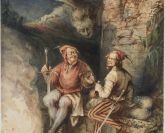 Camille Rogier
(1810-1896)
Camille Rogier
(1810-1896)
 Paris BORDONE
(Trévise, 1500 - Venise, 1571)
Paris BORDONE
(Trévise, 1500 - Venise, 1571)
-165x133.jpg) Maître de l'Incrédulitgé de saint Thomas (Jean Ducamps ?)
Actif à Rome de la fin des années 1920 à 1637
Maître de l'Incrédulitgé de saint Thomas (Jean Ducamps ?)
Actif à Rome de la fin des années 1920 à 1637
-165x133.jpg) Claude Nattiez
(actif à Rome entre 1641 et 1660)
Claude Nattiez
(actif à Rome entre 1641 et 1660)
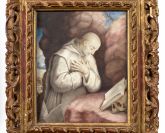 Simon Demasso
(Lyon, 1658 - id., 1738
Simon Demasso
(Lyon, 1658 - id., 1738
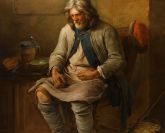 Charles-François Hutin
(Paris, 1715-Dresde, 1776)
Charles-François Hutin
(Paris, 1715-Dresde, 1776)
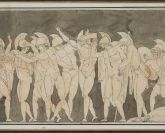 Louis Adrien MASRELIEZ
(Paris, 1748 - Stockholm, 1810)
Louis Adrien MASRELIEZ
(Paris, 1748 - Stockholm, 1810)
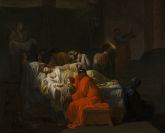 Pierre Peyron
(Aix-en-Provence, 1744 - Paris, 1814)
Pierre Peyron
(Aix-en-Provence, 1744 - Paris, 1814)
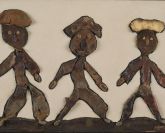 Philippe DEREUX
(Lyon, 1918 - Villeurbanne, 2001)
Philippe DEREUX
(Lyon, 1918 - Villeurbanne, 2001)
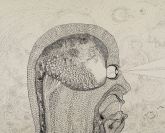 Robert MALAVAL
(Nice, 1937 - Paris, 1980)
Robert MALAVAL
(Nice, 1937 - Paris, 1980)
-165x133.jpg) Bernard REQUICHOT
(Asnières-sur-Vègre, 1929 - Paris, 1961)
Bernard REQUICHOT
(Asnières-sur-Vègre, 1929 - Paris, 1961)
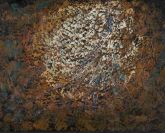 Bernard REQUICHOT
(Asnières-sur-Vègre, Sarthe, 1929 – Paris, 1961)
Bernard REQUICHOT
(Asnières-sur-Vègre, Sarthe, 1929 – Paris, 1961)
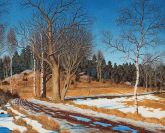 Oskar Bergman
(Stockholm, 1879 – id., 1963)
Oskar Bergman
(Stockholm, 1879 – id., 1963)
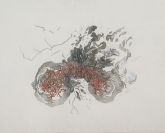 Mélanie DELATTRE-VOGT
(Valenciennes, 1984)
Mélanie DELATTRE-VOGT
(Valenciennes, 1984)
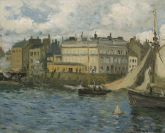 Helmer Osslund
(Tuna, 1866 – Stockholm, 1938)
Helmer Osslund
(Tuna, 1866 – Stockholm, 1938)
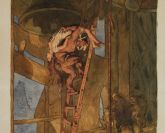 Marcel ROUX
(Bessenay, 1878 – Chartres, 1922)
Marcel ROUX
(Bessenay, 1878 – Chartres, 1922)
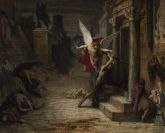 Jules-Elie DELAUNAY
(Nantes, 1828 – Paris, 1891)
Jules-Elie DELAUNAY
(Nantes, 1828 – Paris, 1891)
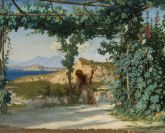 Ernest Antoine Hebert
(Grenoble, 1817 – La Tronche, 1908)
Ernest Antoine Hebert
(Grenoble, 1817 – La Tronche, 1908)
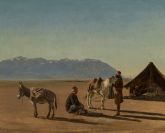 Harald Jerichau
(Copenhague, 1851 – Rome, 1878)
Harald Jerichau
(Copenhague, 1851 – Rome, 1878)
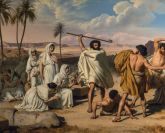 Eugène Roger
(Sens, 1807 – Paris, 1840)
Eugène Roger
(Sens, 1807 – Paris, 1840)
-165x133.jpg) François-Marius Granet
(Aix-en-Provence, 1775 – id., 1849)
François-Marius Granet
(Aix-en-Provence, 1775 – id., 1849)
-165x133.jpg) Alberto GIRONELLA
(Mexico, 1929 – Valle de Bravo (Mexique), 1999)
Alberto GIRONELLA
(Mexico, 1929 – Valle de Bravo (Mexique), 1999)
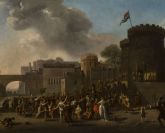 Nicolas-Antoine Taunay
(Paris, 1755 – id., 1830)
Nicolas-Antoine Taunay
(Paris, 1755 – id., 1830)
-165x133.jpg) François-Marius Granet
(Aix-en-Provence, 1775 – id., 1849)
François-Marius Granet
(Aix-en-Provence, 1775 – id., 1849)
-165x133.jpg) Jean-Joseph-Xavier Bidauld
(Carpentras, 1758 – Montmorency, 1846)
Jean-Joseph-Xavier Bidauld
(Carpentras, 1758 – Montmorency, 1846)
-165x133.jpg) Jacques Stella
(Lyon, 1596 – Paris, 1657)
Jacques Stella
(Lyon, 1596 – Paris, 1657)
 Paris BORDONE
(Treviso, 1500 – Venice, 1571)
Paris BORDONE
(Treviso, 1500 – Venice, 1571)
-165x133.jpg) Raoul UBAC
(Malmedy or Cologne, 1910 – Dieudonné, 1985)
Raoul UBAC
(Malmedy or Cologne, 1910 – Dieudonné, 1985)
-165x133.jpg) Robert Malaval
(Nice, 1937 – Paris, 1980)
Robert Malaval
(Nice, 1937 – Paris, 1980)
 Pierre Peyron
(Aix-en-Provence, 1744 – Paris, 1814)
Pierre Peyron
(Aix-en-Provence, 1744 – Paris, 1814)
 Jules-Elie Delaunay
(Nantes, 1828 – Paris, 1891)
Jules-Elie Delaunay
(Nantes, 1828 – Paris, 1891)
 Marcel Roux
(Bessenay, 1878 – Chartres, 1922)
Marcel Roux
(Bessenay, 1878 – Chartres, 1922)
-165x133.jpg) Alberto Gironella
(Mexico, 1929 – Valle de Bravo (Mexico), 1999) 32. El entierro de Zapata y ostros enterramientos [Funeral of Zapata and Other Burials], Elas de Oro II, 1972 A tribute to Zapata Alberto Gironella (1929-1999) had his first exhibition in 1952 in a gallery in
Alberto Gironella
(Mexico, 1929 – Valle de Bravo (Mexico), 1999) 32. El entierro de Zapata y ostros enterramientos [Funeral of Zapata and Other Burials], Elas de Oro II, 1972 A tribute to Zapata Alberto Gironella (1929-1999) had his first exhibition in 1952 in a gallery in
-165x133.jpg) Thomas Blanchet
(Paris, 1614 – Lyon, 1689)
Thomas Blanchet
(Paris, 1614 – Lyon, 1689)
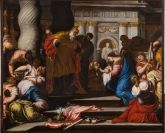 Valentin Lefèvre
(Bruxelles, 1637 – Venise, 1677)
Valentin Lefèvre
(Bruxelles, 1637 – Venise, 1677)
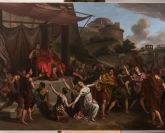 Laurent Pécheux
Lyon, 1729 – Turin, 1821
Laurent Pécheux
Lyon, 1729 – Turin, 1821
 Jean-Baptiste Deshays
(Rouen, 1729 – Paris, 1765)
Jean-Baptiste Deshays
(Rouen, 1729 – Paris, 1765)
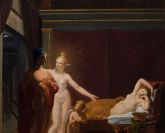 Joseph François Ducq
(Ledeghem, 1762 – Bruges, 1829)
Joseph François Ducq
(Ledeghem, 1762 – Bruges, 1829)
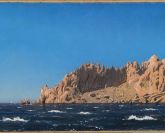 Holger Drachmann
(Copenhague, 1846 – Hornbaek, 1908)
Holger Drachmann
(Copenhague, 1846 – Hornbaek, 1908)
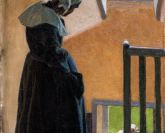 Pelle Swedlund
(Gävle, 1865 – id., 1947)
Pelle Swedlund
(Gävle, 1865 – id., 1947)
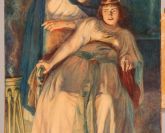 Arthur George Walker
(Londres, 1861 – id., 1939)
Arthur George Walker
(Londres, 1861 – id., 1939)
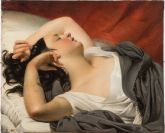 Claude-Marie DUBUFE
(Paris, 1790 – Celle-Saint-Cloud, 1864)
Claude-Marie DUBUFE
(Paris, 1790 – Celle-Saint-Cloud, 1864)
-165x133.jpg) Nicolas Bertin
(Paris, 1668 – id., 1736)
Nicolas Bertin
(Paris, 1668 – id., 1736)
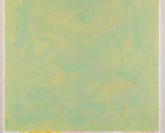 Vincent Bioulès
(Montpellier, 1938)
Vincent Bioulès
(Montpellier, 1938)
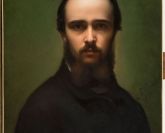 Paul Borel
(Lyon, 1828 – id., 1913)
Paul Borel
(Lyon, 1828 – id., 1913)
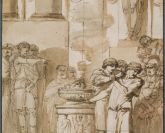 Giuseppe Cades
(Rome, 1750 – id., 1799)
Giuseppe Cades
(Rome, 1750 – id., 1799)
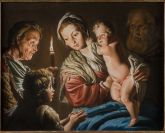 Andreas Joseph Chandelle
(Francfort, 1743-Id., 1820)
Andreas Joseph Chandelle
(Francfort, 1743-Id., 1820)
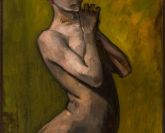 Émilie Charmy
(Saint Etienne, 1978 – Crosne, 1974)
Émilie Charmy
(Saint Etienne, 1978 – Crosne, 1974)
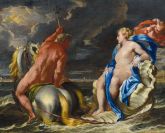 Michel Dorigny
(Saint-Quentin, 1616 – Paris, 1665)
Michel Dorigny
(Saint-Quentin, 1616 – Paris, 1665)
-165x133.jpg) Gustaf Fjaestad
(Stockholm, 1868 – Arvika, 1948)
Gustaf Fjaestad
(Stockholm, 1868 – Arvika, 1948)
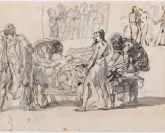 François Gérard
(Rome, 1770 – Paris, 1837)
François Gérard
(Rome, 1770 – Paris, 1837)
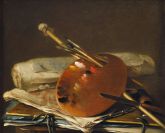 Nicolas Henri Jeaurat de Bertry
(Paris, 1728 – id., vers 1796)
Nicolas Henri Jeaurat de Bertry
(Paris, 1728 – id., vers 1796)
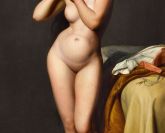 Paul Jourdy
(Dijon, 1805 – Paris, 1856)
Paul Jourdy
(Dijon, 1805 – Paris, 1856)
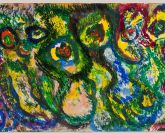 Jean Raine
(Bruxelles, 1927 – Rochetaillée-sur-Saône, 1986)
Jean Raine
(Bruxelles, 1927 – Rochetaillée-sur-Saône, 1986)
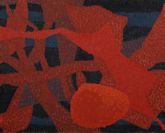 Bernard Réquichot
(Asnières-sur-Vègre, Sarthe, 1929 – Paris, 1961)
Bernard Réquichot
(Asnières-sur-Vègre, Sarthe, 1929 – Paris, 1961)
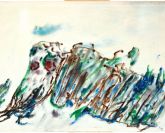 Henri Michaux
(1899, Namur – 1984, Paris)
Henri Michaux
(1899, Namur – 1984, Paris)
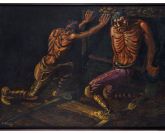 Mario Alejandro Yllanes
(Oruro, 1913 – 1946 ?)
Mario Alejandro Yllanes
(Oruro, 1913 – 1946 ?)
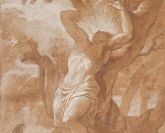 Joseph-Benoît Suvée
(Bruges, 1743 – Rome, 1807)
Joseph-Benoît Suvée
(Bruges, 1743 – Rome, 1807)
-165x133.jpg) Joseph-Benoît Suvée
(Bruges, 1743 – Rome, 1807)
Joseph-Benoît Suvée
(Bruges, 1743 – Rome, 1807)
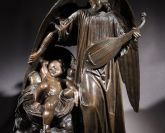 James Pradier
(Genève, 1790 – Bougival, 1852)
James Pradier
(Genève, 1790 – Bougival, 1852)
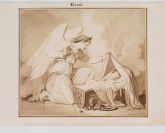 Pierre Révoil
(Lyon, 1776 – Paris, 1842)
Pierre Révoil
(Lyon, 1776 – Paris, 1842)
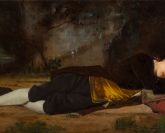 Jean-Baptiste Chatigny
(Lyon, 1834 – id., 1886)
Jean-Baptiste Chatigny
(Lyon, 1834 – id., 1886)
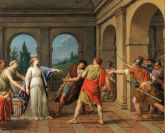 Louis Jean-François LAGRENEE, dit l’Aîné
(Paris, 1725 – Paris, 1805)
Louis Jean-François LAGRENEE, dit l’Aîné
(Paris, 1725 – Paris, 1805)
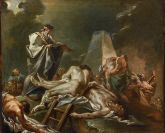 Michel-François Dandré-Bardon
Aix-en-Provence, 1700 – Paris, 1783
Michel-François Dandré-Bardon
Aix-en-Provence, 1700 – Paris, 1783
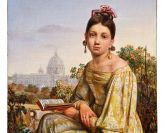 Hans Ditlev Martens
(Kiel, 1795 – Id., 1864)
Hans Ditlev Martens
(Kiel, 1795 – Id., 1864)
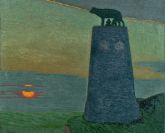 Pelle Swedlund
(Gävle, 1865 – Id., 1947)
Pelle Swedlund
(Gävle, 1865 – Id., 1947)
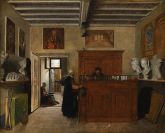 François-Marius Granet
(Aix-en-Provence, 1775 – id., 1849)
François-Marius Granet
(Aix-en-Provence, 1775 – id., 1849)
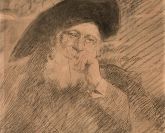 Jeanne Bardey
(Lyon, 1872 - id., 1954)
Jeanne Bardey
(Lyon, 1872 - id., 1954)
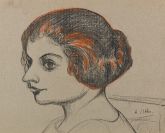 André Utter
(Paris, 1886 - id., 1948)
André Utter
(Paris, 1886 - id., 1948)
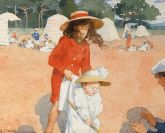 Élisabeth Sonrel
(Tours, 1874 - Sceaux, 1953)
Élisabeth Sonrel
(Tours, 1874 - Sceaux, 1953)
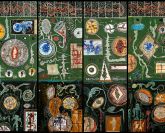 Bernard Pruvost
(Alger, 1952)
Bernard Pruvost
(Alger, 1952)
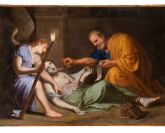 Jacques Stella
(Lyon, 1596 - Paris, 1657)
Jacques Stella
(Lyon, 1596 - Paris, 1657)
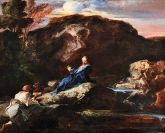 Louis Cretey
(Lyon, before 1638 - Rome (?), after 1702)
Louis Cretey
(Lyon, before 1638 - Rome (?), after 1702)
 Michel-François Dandré-Bardon
(Aix-en-Provence, 1700 - Paris, 1783)
Michel-François Dandré-Bardon
(Aix-en-Provence, 1700 - Paris, 1783)
 François-Marius Granet
(Aix-en-Provence, 1775 - Id., 1849)
François-Marius Granet
(Aix-en-Provence, 1775 - Id., 1849)
 Hans Ditlev Martens
(Kiel, 1795 - Kiel, 1864)
Hans Ditlev Martens
(Kiel, 1795 - Kiel, 1864)
 Pelle Swedlund
(Gävle, 1865 - Id., 1947)
Pelle Swedlund
(Gävle, 1865 - Id., 1947)
 André Utter
(Paris, 1886 – Id., 1948)
André Utter
(Paris, 1886 – Id., 1948)
 Élisabeth Sonrel
Élisabeth Sonrel
 Bernard Pruvost
(Algiers, 1952)
Bernard Pruvost
(Algiers, 1952)
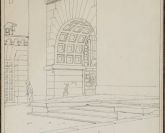 Christoffer Wilhelm Eckersberg
(Sundeved, 1783 - Copenhague, 1853)
Christoffer Wilhelm Eckersberg
(Sundeved, 1783 - Copenhague, 1853)
 Jean-François Forty (actif à Paris, 1775–90)
Jean-François Forty (actif à Paris, 1775–90)
 Thomas Blanchet
(Paris, 1614 - Lyon, 1689)
Thomas Blanchet
(Paris, 1614 - Lyon, 1689)
 Claude Nattiez
(actif à Rome entre 1641 et 1660)
Claude Nattiez
(actif à Rome entre 1641 et 1660)
 Jean Charles Frontier
(Paris, 1701 – Lyon, 1763)
Jean Charles Frontier
(Paris, 1701 – Lyon, 1763)
 Pierre Nicolas Legrand de Sérant
(Pont-l’Évêque, 1758 – Berne, 1829)
Pierre Nicolas Legrand de Sérant
(Pont-l’Évêque, 1758 – Berne, 1829)
 Jean-Baptiste Isabey
(Nancy, 1767 – Paris, 1855)
Jean-Baptiste Isabey
(Nancy, 1767 – Paris, 1855)